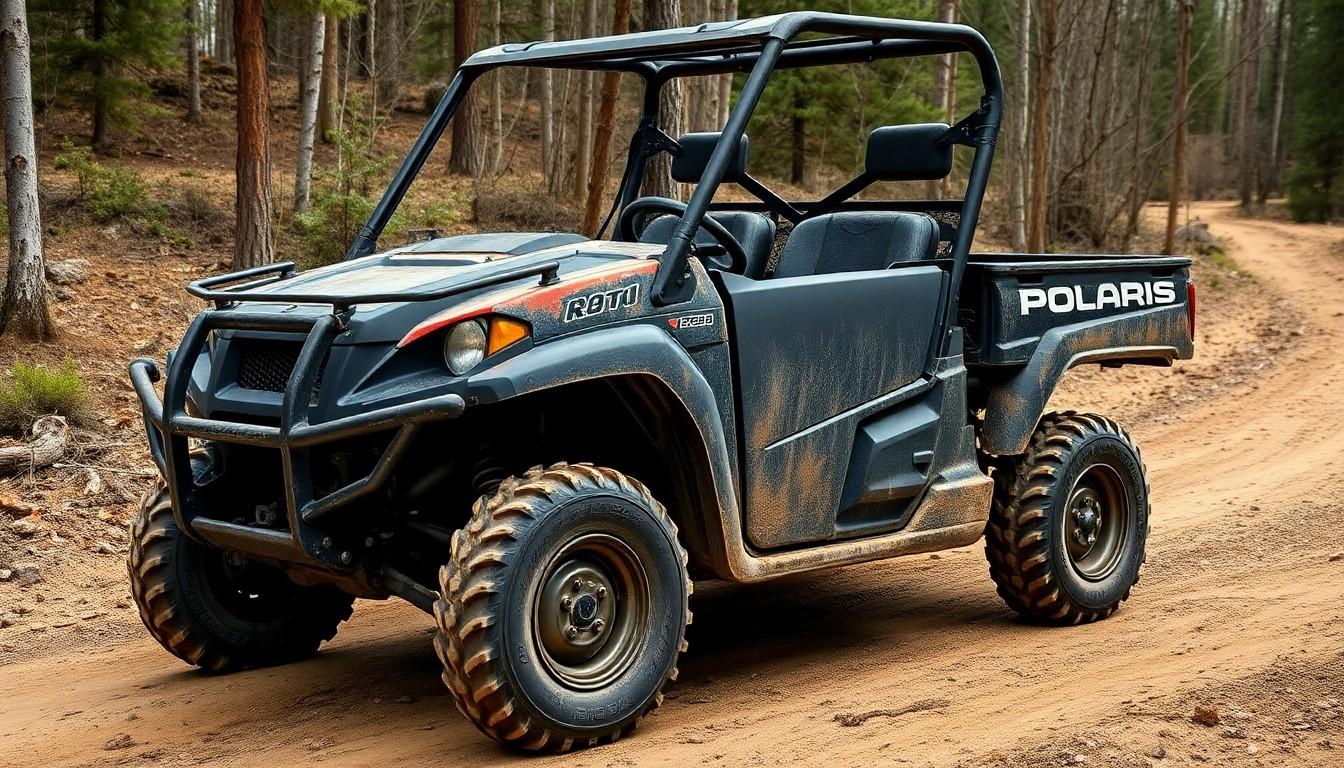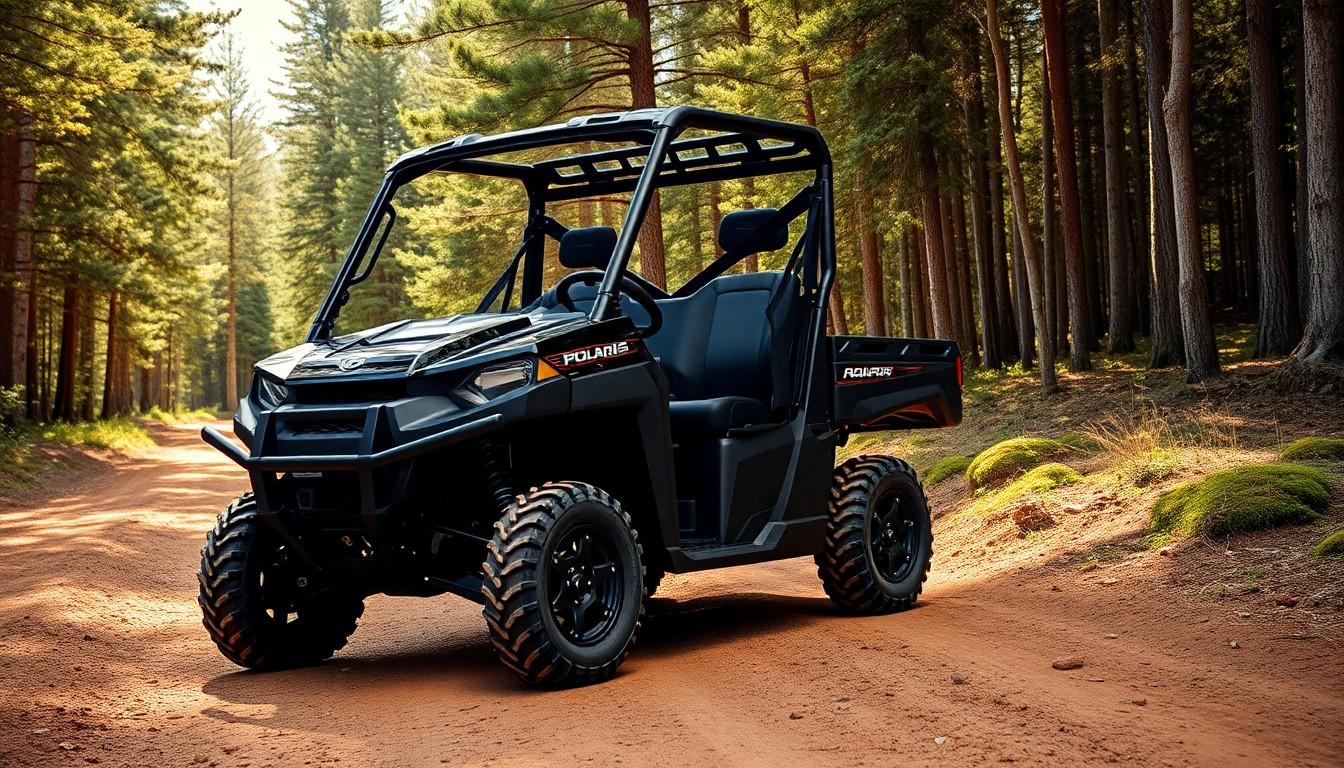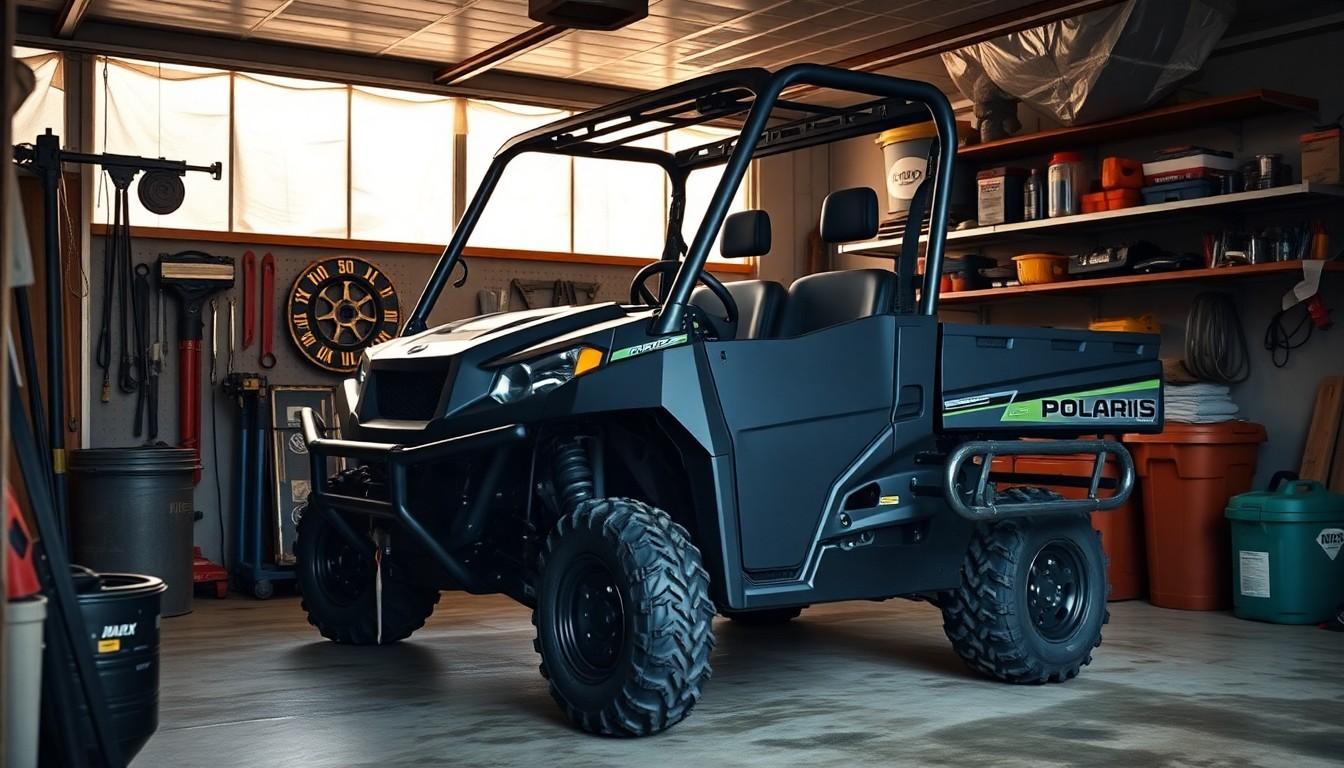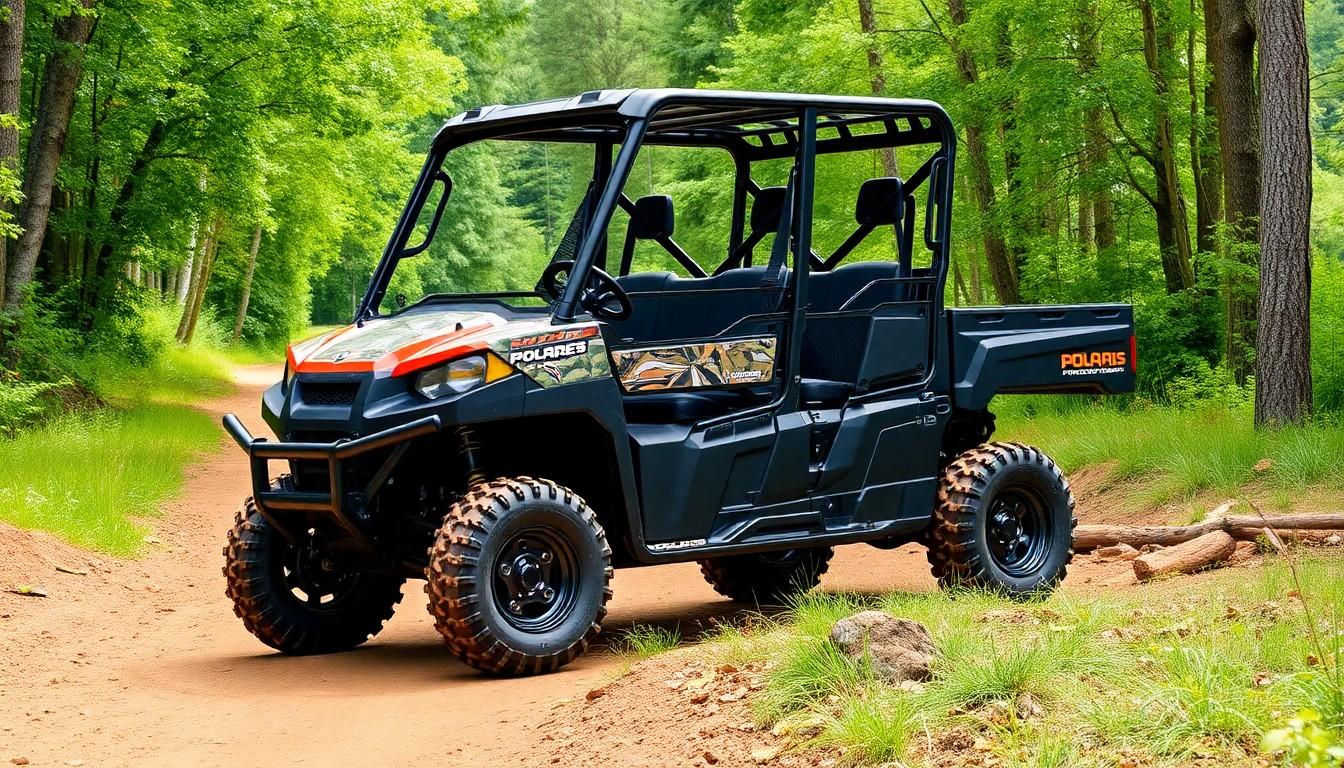When shopping for a Polaris Ranger, we know reliability matters. These versatile UTVs have transformed off-road experiences for countless enthusiasts, but not all model years deliver the same dependable performance you deserve.
We’ve researched extensively to identify which Polaris Ranger years to avoid, saving you from potential headaches and costly repairs. Our analysis reveals exact model years with recurring transmission failures, electrical system issues, and overheating problems that could leave you stranded on the trail. By knowing which years to steer clear of, you’ll make a smarter investment and enjoy more time riding instead of repairing.
Understanding the Polaris Ranger: A Brief Overview
The Polaris Ranger lineup stands as a flagship series of utility terrain vehicles (UTVs) first introduced in 1998. These versatile machines have earned their reputation as workhorses for farms, ranches, hunting grounds, and recreational trails across America. Polaris Industries, the parent company, has consistently evolved the Ranger series to include various engine sizes, seating configurations, and specialized features customized to different user needs.
Rangers are distinguished by their side-by-side seating arrangement, substantial cargo capacity, and rugged construction designed for tackling challenging terrain. Most models feature a tilting cargo bed with 500-1,000 pound capacity, making them practical for both work and play scenarios. The lineup typically includes models with engine displacements ranging from 500cc to 1000cc, offering various power options to suit different applications.
Over the decades, Polaris has released many Ranger iterations, including the popular Ranger 500, Ranger 570, Ranger 800, and Ranger 900 series. Each generational update typically brings improvements in power delivery, suspension components, cabin comfort, and technological features. While many model years have proven exceptionally reliable, certain production periods have demonstrated recurring issues that potential buyers should approach with caution.
Understanding the evolution of the Ranger lineup helps provide context for identifying problematic model years. The build quality, component selection, and engineering answers have varied significantly throughout the product’s history, creating distinct differences in reliability across the timeline. Recognizing these patterns enables potential buyers to make more informed decisions when handling the used Ranger market.
Common Issues with Problematic Polaris Ranger Models

Certain Polaris Ranger model years have demonstrated recurring problems that can lead to expensive repairs and frequent downtime. Understanding these issues helps buyers avoid potentially troublesome vehicles and make smarter purchasing decisions.
Transmission Failures
Transmission problems plague several Polaris Ranger model years, with the 2009 and 2010 models experiencing the most important issues. Owners of these vehicles frequently report complete transmission failures requiring costly replacement. The 2011 and 2012 Rangers continued this unfortunate trend, with many users facing similar transmission breakdowns that resulted in expensive repair bills. Some 2014 Polaris Ranger XP 900 models also exhibited transmission complications, particularly difficulties getting the vehicle into gear, though these occurred less frequently than in earlier problematic years.
Electrical System Problems
Electrical issues represent another major concern for exact Ranger years, particularly the 2011 and 2012 models. These electrical system failures often manifest as intermittent power loss, dashboard malfunctions, and starting problems. Many owners report these electrical complications occurring alongside transmission issues, creating a double burden of reliability concerns for these particular model years. The combination of electrical and transmission problems makes these models especially risky purchases in the used market.
Engine Complications
Engine-related problems are most prevalent in the 2013 Polaris Ranger lineup. Overheating stands out as the primary issue, with many units experiencing temperature regulation failures during normal operation. These 2013 models also commonly developed steering problems, creating potentially dangerous riding conditions. The engine complications in these vehicles typically require substantial mechanical intervention, resulting in important repair costs and extended periods when the vehicle remains unusable. Pre-purchase mechanical inspections are particularly important for these model years to identify signs of these common engine and steering defects.
Polaris Ranger Years to Avoid

When shopping for a used Polaris Ranger, certain model years have documented reliability issues that could lead to expensive repairs and frustrating downtime. Our research shows exact production periods with recurring problems that serious buyers should approach with caution.
2010-2012 Models: Early Design Flaws
The 2010-2012 Polaris Ranger models suffer from important transmission and electrical system problems that plagued these early designs. Transmission failures became a common complaint among owners, with many experiencing complete breakdowns requiring costly repairs. Electrical issues in these models frequently manifest as intermittent power loss and dashboard malfunctions, creating both inconvenience and safety concerns. The 2011-2012 models in particular have developed a reputation for requiring expensive repairs, making them less desirable options in the used market.
2014-2015 Models: Recurring Technical Issues
Technical problems plague the 2014-2015 Polaris Ranger lineup, especially the XP 900 model that demonstrates persistent mechanical shortcomings. Owners report frequent transmission troubles and gear engagement failures that compromise the vehicle’s reliability and performance. These models experience mechanical faults that often appear after moderate use, leading to unexpected breakdowns during critical work or recreational activities. Many enthusiasts consider these years particularly problematic due to the combination of high purchase prices and the likelihood of facing important repair costs shortly after acquisition.
2018 Models: Notable Recalls
Safety concerns prompted serious recalls for the 2018 Polaris Ranger XP 1000 and CREW XP 1000 Off-Road Vehicles due to documented fire hazards. Polaris issued these recalls specifically to address potential risks that could endanger riders and passengers. Fire-related issues represent some of the most dangerous problems in any vehicle, making thorough inspection critical for anyone considering a 2018 model. Prospective buyers should verify that any 2018 Ranger they’re considering has undergone the necessary recall repairs before finalizing their purchase.
Most Reliable Polaris Ranger Years

After examining the problematic model years, let’s turn our attention to the Polaris Ranger years that have demonstrated exceptional reliability and performance. These standout models offer buyers confidence with proven track records of durability and fewer mechanical issues.
Best Model Years for Durability
The 2011-2013 Polaris Ranger 800 models stand as remarkable examples of durability in the lineup. Many owners report these machines reaching impressive milestones of over 20,000 miles and approximately 3,000+ hours of operation with minimal major mechanical problems. Their robust construction and refined engineering contribute to their legendary longevity in demanding conditions. The 2010 Polaris Ranger XP 800 deserves special mention even though the general transmission concerns of that production period, as it features a powerful 800cc engine that’s known for reliability and straightforward maintenance requirements.
The 2013 Polaris Ranger 900 XP represents a important step forward in the evolution of the platform. This model delivers enhanced power output compared to previous iterations while simultaneously providing riders with a noticeably smoother driving experience. Its improved suspension system absorbs terrain irregularities effectively, reducing driver fatigue during extended operation sessions. Maintenance accessibility was also improved on this model, making routine service tasks less time-consuming for owners.
Top Performer Editions
The 2017 Polaris Ranger XP 1000 emerges as the crown jewel among reliable Ranger models. This powerhouse combines exceptional reliability with cutting-edge features that satisfy both work and recreational requirements. Its refined 999cc ProStar engine delivers responsive power throughout the RPM range while maintaining impressive durability under load. Suspension components on this model demonstrate excellent resistance to premature wear, even when regularly tackling challenging terrain.
The 2013 Polaris Ranger 900 XP earns recognition again in the top performer category for its outstanding balance of power, comfort, and dependability. Owners consistently praise this model’s versatility across various applications from farm work to hunting expeditions. The drivetrain components demonstrate remarkable resilience against failures that plagued earlier models. Electrical systems in this production year show significantly improved reliability compared to the problematic 2011-2012 iterations, with far fewer reports of dashboard malfunctions or unexpected power loss during operation.
How to Inspect a Used Polaris Ranger

Check the History
A thorough vehicle history report provides critical insights into a used Ranger’s past. Services like Carfax or AutoCheck reveal previous accidents, ownership transfers, and any outstanding recalls. These reports often uncover issues that aren’t immediately visible during physical inspection, giving you leverage during price negotiations and helping avoid potential headaches down the road.
Look for Signs of Good Maintenance
Regular maintenance records indicate a well-cared-for Ranger. Owners who keep detailed service logs typically maintain their vehicles properly in other ways too. Check for fresh oil, clean filters, and minimal leakage around engine components. Excessive rust, cracked hoses, or worn-out tires signal neglect and potential future problems that could lead to costly repairs.
Mechanical Inspection
Transmission problems plague several Polaris Ranger model years, making this a crucial inspection point. Test all gears thoroughly, listening for grinding noises or hesitation when shifting. The engine should start promptly and run smoothly without overheating – inspect for coolant leaks or damaged cooling systems. Examine the electrical system by testing all lights, gauges, switches, winches, and accessories to ensure they function correctly without flickering or intermittent failures.
Physical Inspection
Frame integrity directly impacts safety and longevity in off-road vehicles. Carefully examine the Ranger’s frame for bends, cracks, or excessive rust that might compromise structural integrity. Check the tires for uneven wear patterns, which often indicate alignment or suspension issues. Doors and accessories deserve special attention – real doors offer better protection and durability compared to mesh options, though they should open and close smoothly without binding or excessive play.
Test Drive
Nothing reveals potential issues like a comprehensive test drive. Take the Ranger over varied terrain if possible, testing acceleration, braking, and steering response. Listen for unusual clunks, rattles, or whines that might indicate mechanical problems. Pay close attention to how the transmission engages and shifts, especially in problematic model years like 2009-2015. The handling should feel responsive and predictable, with no excessive vibration or wandering at various speeds.
Professional Inspection
Professional mechanics spot issues that even experienced owners might miss. Investing $100-200 in a pre-purchase inspection can save thousands in unexpected repairs. A qualified mechanic will use specialized tools to diagnose potential transmission, engine, and electrical system problems – particularly important when considering models from years with known issues. Their unbiased assessment provides peace of mind and strengthens your negotiating position if problems are discovered.
Maintenance Tips to Extend Your Ranger’s Lifespan

Regular maintenance significantly extends the life of your Polaris Ranger, potentially keeping it running for 7-10 years with proper care. Following these proven maintenance strategies helps avoid costly repairs and ensures your vehicle remains reliable for all your adventures.
Regular Check-ups and Timely Repairs
Scheduling routine inspections prevents minor issues from developing into major mechanical failures. Mechanics can identify potential problems early, saving you from expensive fixes down the road. Oil changes, filter replacements, and fluid checks form the foundation of essential maintenance for any Ranger model.
Proper Storage Practices
Keeping your Ranger protected from environmental elements dramatically improves its longevity. Garage storage shields it from harmful UV rays, moisture, and temperature fluctuations that accelerate deterioration. When outdoor storage is unavoidable, invest in a quality weatherproof cover specifically designed for UTVs.
Consider Your Usage Environment
The conditions where you operate your Ranger directly impact its wear rate. Vehicles regularly exposed to mud, saltwater, or extreme terrain require more frequent maintenance than those used on gentler terrain. Thorough cleaning after rides through harsh environments removes corrosive materials before they cause damage.
Maintenance History Documentation
Maintaining detailed service records increases your Ranger’s resale value and ensures consistent care. These records prove particularly valuable when purchasing used models, as they reveal whether previous owners properly maintained the vehicle. Before buying a pre-owned Ranger, request complete maintenance documentation and consider having a professional mechanic perform a thorough inspection.
Conclusion
Choosing the right Polaris Ranger requires careful consideration of model years with documented issues. We’ve highlighted the problematic years—particularly 2009-2012 with transmission failures 2013-2015 with overheating problems and the 2018 models with safety recalls.
By focusing on reliable models like the 2011-2013 Ranger 800 and the standout 2017 XP 1000 you’ll enjoy more trails and fewer repair bills. Remember to thoroughly inspect any used Ranger checking for maintenance records mechanical issues and unresolved recalls.
With proper maintenance and regular servicing your Polaris Ranger can deliver 7-10 years of dependable performance. Armed with this knowledge you’re now ready to make a smart investment in a UTV that meets your needs without the headaches of problematic model years.
Frequently Asked Questions
What years of Polaris Rangers should be avoided?
The most problematic Polaris Ranger years include 2009-2012 models (transmission failures and electrical issues), 2013 models (engine overheating and steering problems), 2014-2015 XP 900 models (mechanical issues), and 2018 models (serious fire hazard recalls). These model years tend to have recurring issues that can lead to expensive repairs and safety concerns.
What are the most reliable Polaris Ranger models?
The most reliable Polaris Ranger models include the 2011-2013 Ranger 800 (known for longevity), 2010 Ranger XP 800 (powerful and dependable despite some concerns), 2013 Ranger 900 XP (enhanced power and improved suspension), and 2017 Ranger XP 1000 (top performer with advanced features). These models have demonstrated exceptional durability and performance.
What common issues occur in problematic Polaris Ranger years?
Common issues in problematic Polaris Ranger years include transmission failures (especially in 2009-2012 models), electrical system problems causing power loss and dashboard malfunctions (2011-2012 models), engine overheating (2013 models), steering issues creating dangerous riding conditions, and fire hazards (2018 models that were subject to recalls).
How should I inspect a used Polaris Ranger before buying?
Check the vehicle history report for accidents and recalls. Look for maintenance records and inspect engine components. Test the transmission and engine operation thoroughly. Examine the frame and tires for damage. Take it for a comprehensive test drive to identify unusual noises or handling issues. Consider hiring a professional for inspection to uncover hidden problems.
How long does a Polaris Ranger typically last?
With proper maintenance, a Polaris Ranger can typically last 7-10 years. Regular maintenance including routine inspections, timely repairs, oil changes, and fluid checks significantly extends lifespan. Usage conditions affect longevity – Rangers used in harsh environments require more frequent maintenance. Many well-maintained Rangers can exceed 20,000 miles with minimal major mechanical issues.
What maintenance is required for a Polaris Ranger?
Essential Polaris Ranger maintenance includes regular oil changes, fluid checks (transmission, coolant, brake), air filter replacements, and belt inspections. Schedule routine professional inspections and address repairs promptly. Store the vehicle properly in a garage or using a weatherproof cover. Maintain detailed service records. Increase maintenance frequency for Rangers used in harsh conditions like mud, dust, or extreme temperatures.
Are Polaris Rangers good for farming and hunting?
Yes, Polaris Rangers are excellent for farming and hunting. They offer side-by-side seating, substantial cargo capacity, and rugged construction that can handle various terrains. Their versatility makes them ideal for hauling equipment and navigating rough landscapes. Choose from different engine sizes based on your specific needs. Just be sure to select a reliable model year for fewer maintenance issues.
What should I do if my Ranger has been part of a safety recall?
Verify if all recall repairs have been completed before purchase by checking the vehicle identification number (VIN) with a Polaris dealer or on the NHTSA website. If you already own a Ranger affected by a recall, contact an authorized Polaris dealer immediately to schedule necessary repairs. Most recall-related repairs are performed free of charge to ensure your vehicle meets safety standards.

